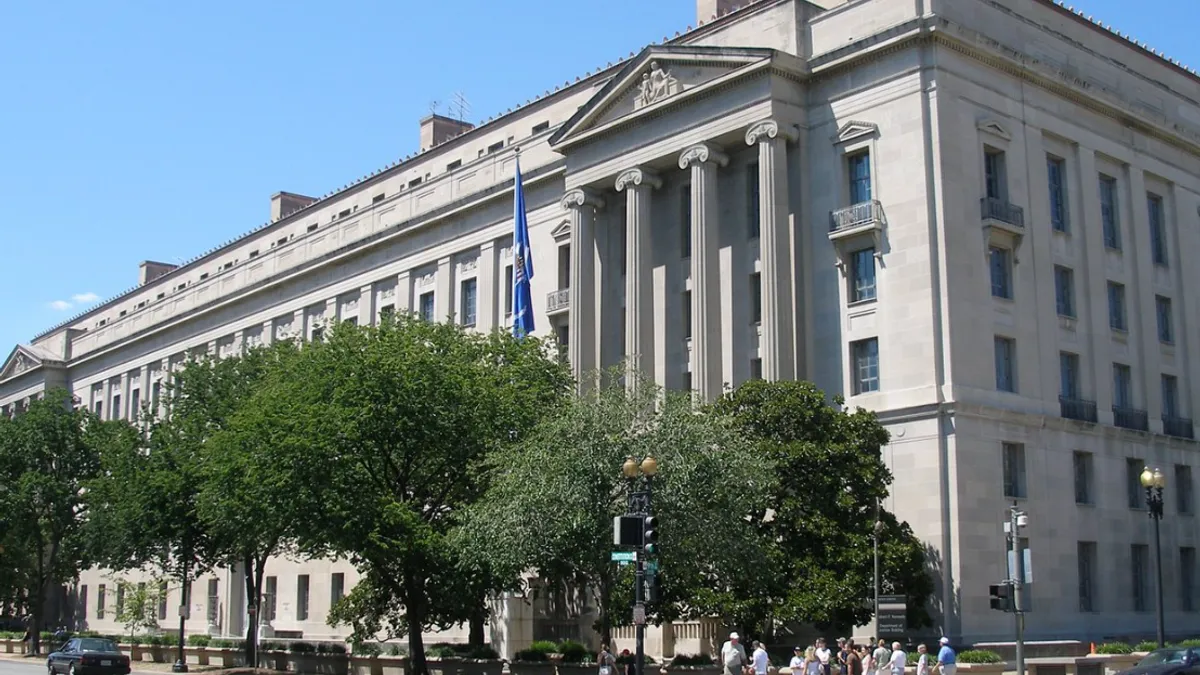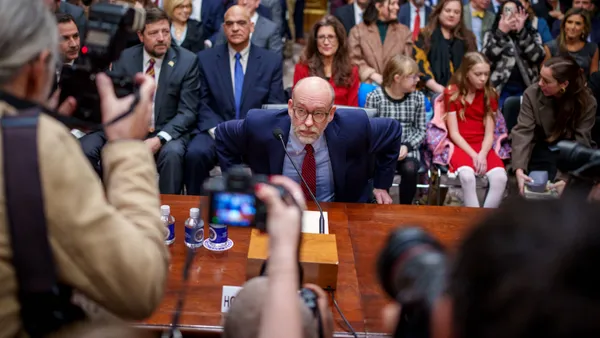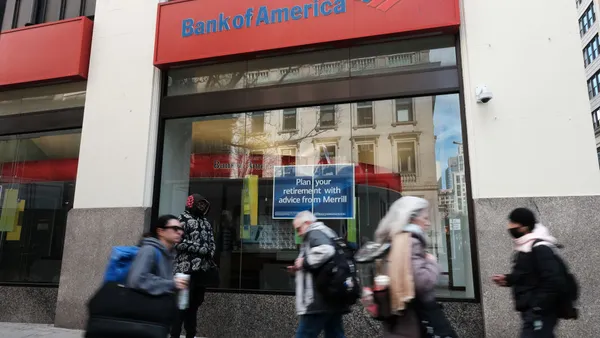The Justice Department is expanding its scrutiny of bank mergers to include a broader scope of factors such as fees, interest rates and customer service, the department’s antitrust chief said Tuesday.
Speaking at an event hosted by the Brookings Institution on Tuesday, Jonathan Kanter, the DOJ’s assistant attorney general for antitrust, said the department’s bank merger review process will take into account concentration levels across a wide range of metrics beyond bank deposits and branch overlap.
“[A] competitive factors report should evaluate the many ways in which competition manifests itself in a particular banking market — including through fees, interest rates, branch locations, product variety, network effects, interoperability and customer service,” he said. “Our competitive factors reports will increasingly address these dimensions of competition that may not be observable simply by measuring market concentration based on deposits alone.”
Kanter’s remarks come as the DOJ, Federal Reserve, Federal Deposit Insurance Corp. and the Office of the Comptroller of the Currency, are giving bank merger guidelines their biggest refresh since 1995.
Kanter cited corporations’ expanded geography, as well as customers’ growing financial services needs, among several factors that indicate the decades-old guidelines should be updated to reflect current market realities.
The existing guidelines’ “narrow focus on local market deposit concentration” is inadequate to assess the likely competitive effects of a modern bank merger, he said.
“[F]inancial conglomerates today may compete in many more geographic areas, across many more business lines, and on many different dimensions than they did three decades ago,” Kanter said.
Regulators’ current approach to bank mergers “may also disproportionately focus enforcement on transactions involving small local banks and understate network concerns relating to large national and multinational banks,” he said.
Kanter said the DOJ might also weigh a particular merger’s impact on credit unions, fintechs and other nonbank financial firms.
“We're going to look at all the competitive factors,” Kanter said in a Q&A portion of the event. “We’re not going to artificially limit ourselves to just one or two dimensions of competition.”
Federal Reserve Gov. Michelle Bowman, last September, similarly said digital banks, credit unions and nonbanks should be factored into a revamped measure of market competition when regulators consider a bank merger.
Kanter on Tuesday said the DOJ is working with federal banking agencies to augment the data sources they use when calculating market concentration “to ensure we are relying on the best data possible and using state-of-the-art tools to assess all relevant dimensions of competition.”
“The goal is for this revised procedure to faithfully effectuate the Department’s limited — but essential — statutory role in bank antitrust enforcement and facilitate the banking agencies’ analysis of competition and other factors,” Kanter said.
Guidelines from the 1990s use the Herfindahl-Hirschman index — a figure that increases as branches consolidate and markets concentrate — to gauge a financial institution’s deposit market share.
Bank consolidation has also attracted attention from the Biden administration, which in July 2021 issued an executive order demanding “more robust scrutiny” of mergers.
But a recent string of bank failures has raised questions about whether the White House and regulators may change gears regarding bank mergers in the months ahead.
“If the stress continues, the banking regulators are going to have to permit M&A,” FDIC Vice Chairman Jonathan McKernan told The Wall Street Journal last month.
“Everyone has a plan until they get punched in the face, and this mini-crisis could be the punch in the face that shifts the Biden administration’s restrictive thinking in bank consolidation,” Isaac Boltansky of financial services firm BTIG, told the Journal last month.














